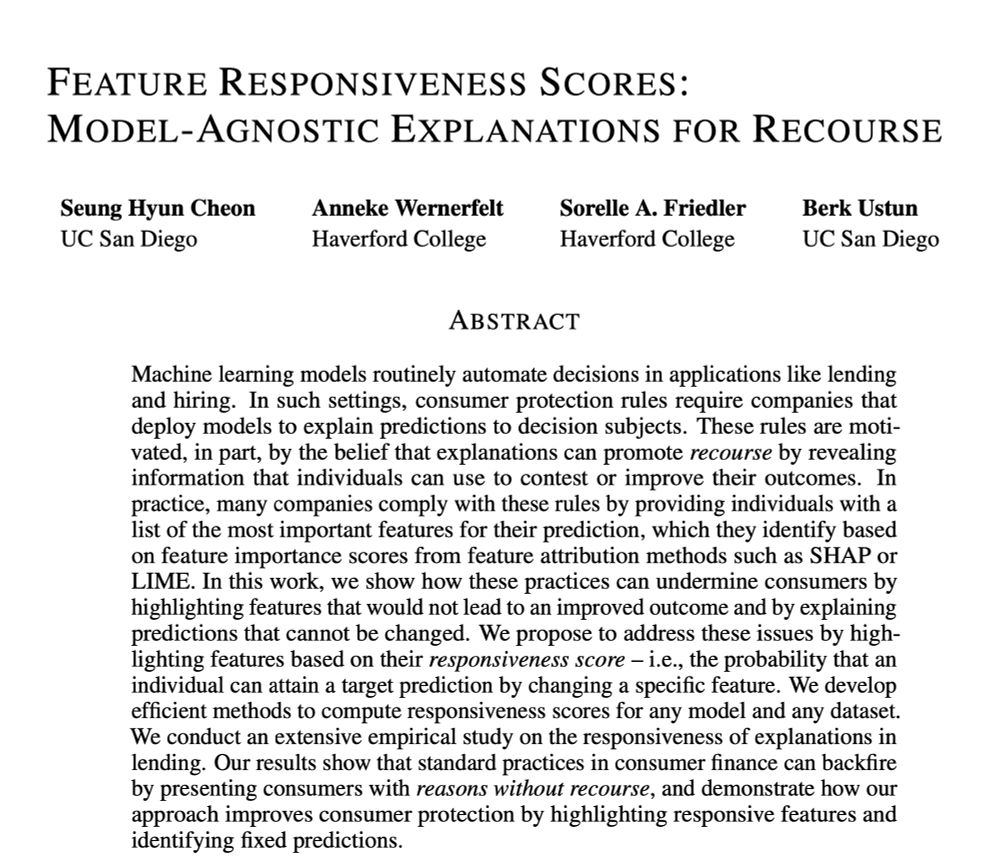Researching reliable, interpretable, and human-aligned ML/AI
In our latest w @anniewernerfelt.bsky.social @berkustun.bsky.social @friedler.net, we show how existing explanation frameworks fail and present an alternative for recourse

In our latest w @anniewernerfelt.bsky.social @berkustun.bsky.social @friedler.net, we show how existing explanation frameworks fail and present an alternative for recourse

